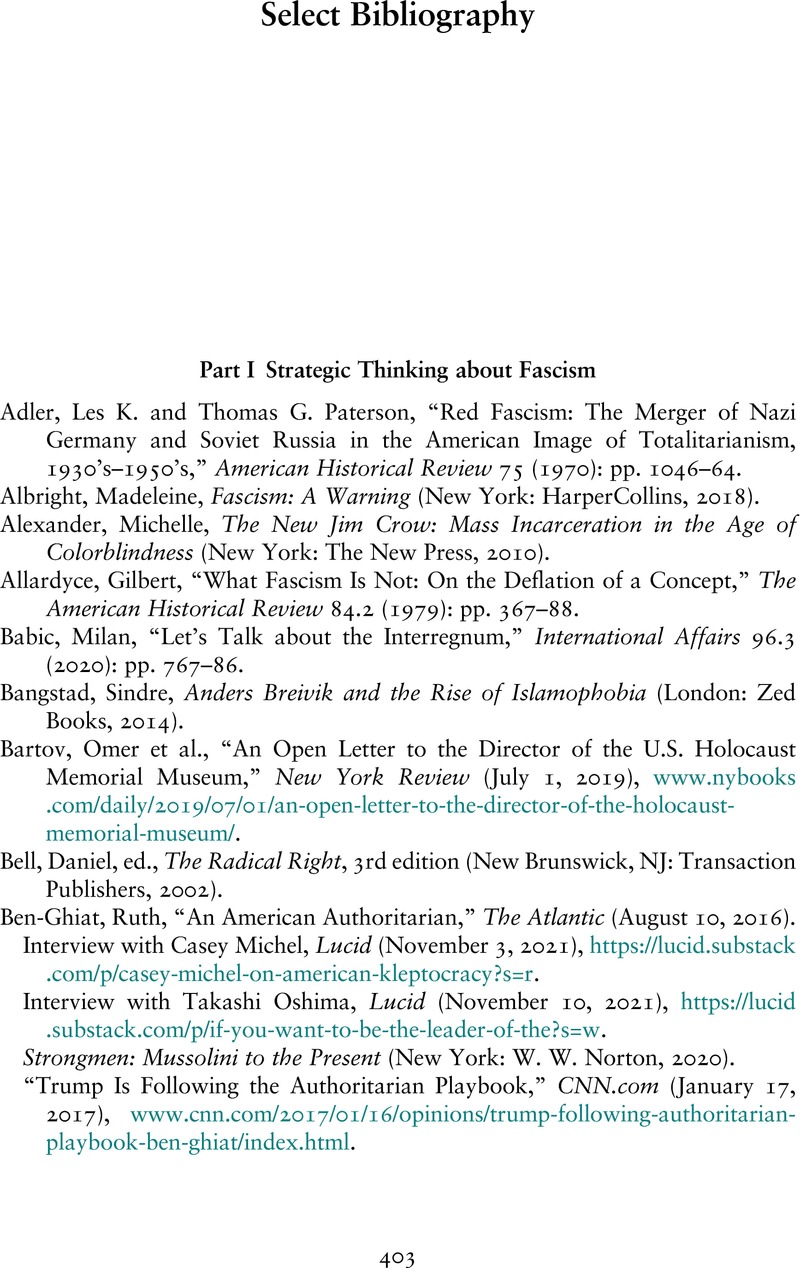Book contents
- Fascism in America
- Fascism in America
- Copyright page
- Contents
- Figures
- Contributors
- Acknowledgments
- Introduction
- Part I Strategic Thinking about Fascism
- Part II Homegrown Nazis
- Part III White Antidemocratic Violence and Black Antifascist Activism
- Part IV Countering Fascism in Culture and Policy
- Select Bibliography
- Index
- References
Select Bibliography
Published online by Cambridge University Press: 14 September 2023
- Fascism in America
- Fascism in America
- Copyright page
- Contents
- Figures
- Contributors
- Acknowledgments
- Introduction
- Part I Strategic Thinking about Fascism
- Part II Homegrown Nazis
- Part III White Antidemocratic Violence and Black Antifascist Activism
- Part IV Countering Fascism in Culture and Policy
- Select Bibliography
- Index
- References
Summary

- Type
- Chapter
- Information
- Fascism in AmericaPast and Present, pp. 403 - 426Publisher: Cambridge University PressPrint publication year: 2023



